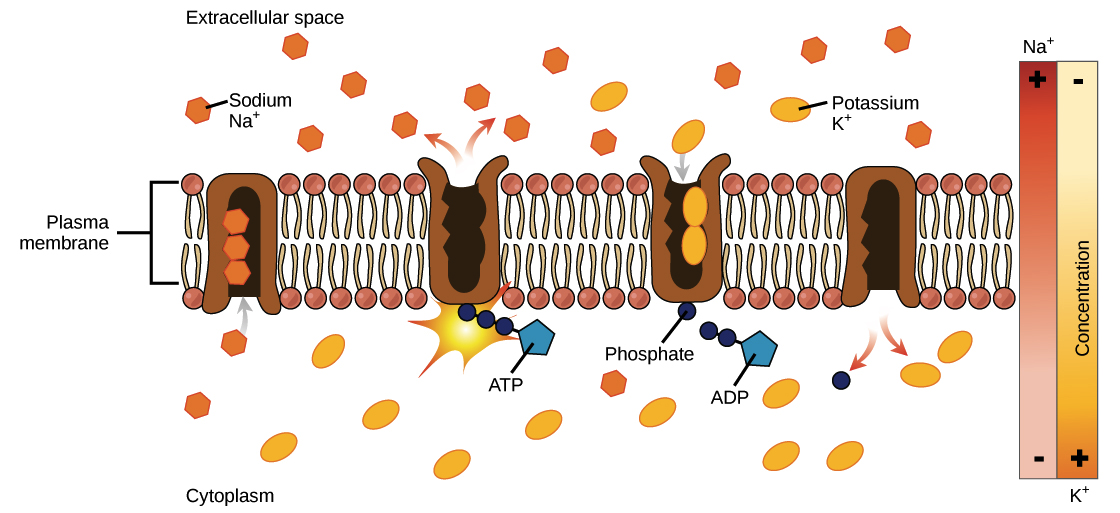Which Term Describes the Difference in Electrical Charge Across a Membrane?
Acne is a skin ailment that affects a large number of people. Acne is caused due to multiple factors, including hormones and heredity. One of the most frequent acne treatment alternatives is benzoyl peroxide or antibiotics, which have antibacterial characteristics and can decrease inflammation on the skin.
However, it is crucial to remember that both benzoyl peroxide and antibiotics can cause skin dryness and irritation if used excessively. In this blog article, we'll look at the terminology used to explain the change in electrical charge across a membrane.
This can be described in three terms. The first one is the area potential, sometimes known as the potential difference. This is a measurement of the electric field surrounding charged items and how it affects other objects nearby.
What is the source of the electrical charge differential surrounding the membrane?
Acne is frequently caused by the body's natural reaction to germs. Acne is caused by a change in electrical charge surrounding the membrane of skin cells. Acne may be treated in various ways, and it can be minimized by avoiding greasy foods and stress. Acne may also arise when a person uses too much soap or cleaner on their face, which removes the skin's natural oils that protect it from germs.
The article discusses what causes variations in electrical charge surrounding the membrane, how to avoid acne by avoiding specific foods, and what therapy is best for minimizing acne scarring. Acne sufferers who want to learn more about this issue should keep reading this blog page.
This blog article will go over the variation in electrical charge surrounding the membrane. This phenomenon is caused by variations in ion concentration across membranes, pH levels across membranes, and changes in cell surface proteins. These variables can result in differing charges on each side of the membrane, subsequently responsible for biological activities such as immunological responses.
Why is the cell unable to react to another stimulus?
The neurons are excitable cells that send and receive information via electrical and chemical impulses. The neuron might be activated by other neurons, chemicals, or temperature changes to generate a signal.
The neuron does not require more than one stimulus at the same time to react. This implies that if two stimuli come at it from opposite directions, it will only pick up on one of them since it cannot process both simultaneously.
A neuron is the most fundamental unit of any neurological system. It is a single, pure cell that communicates with its surroundings by connecting to other neurons.
The neuron has two purposes: it transfers electrochemical nerve impulses (action potentials) from one bodily organ to another, and it receives information about what is going on in the outside environment (e.g., light, sound).
Despite being such an essential part of our existence, scientists have failed to fully grasp why these cells can only respond once or twice before dying off and what causes them to be so sensitive.
The essay goes on to describe how this phenomenon is built into all living organisms, including humans.
Under what circumstances will a local depolarization not result in the action potential?
The action potential will not be produced if the local depolarization is too minor or if there are no voltage-gated sodium channels in the depolarized area. Action potentials can also be avoided by inhibiting potassium channels with medicines like quinine or tetrodotoxin.
However, this does not entirely prevent action potentials from occurring since, once an action potential has been generated and exited a neuron, it will continue to travel along its axon towards other neurons even in the absence of further input from synaptic stimulation. When the membrane of a neuron becomes polarized owing to variations in ion concentrations on either side of the membrane, action potentials are produced.
The action potential is an electrical signal that passes up the axon of a neuron, causing neurotransmitters to be released. When this signal does not reach its intended recipient, it might induce tissue damage and death. This blog article will look at what causes local depolarization and how these changes influence the function of a bodily organ system.
It is critical to realize that if enough voltage-gated channels are opened by depolarization, a single localized current flow can trigger an action potential.
What is the depolarization wave's path of transmission?
The depolarization wave represents the transmission of a change in membrane potential along an axon. This article will look at what it means for a neuron to be "excited" or "inhibited."
An electrochemical mechanism involving neurotransmitters and receptors mediates the passage of the depolarization pulse along a neuron. At synapses, releasing a neurotransmitter from one neuron stimulates the opening of ion channels on another, causing it to fire an action potential.
Depending on whether the postsynaptic cell is more likely to produce an action potential in response to stimulation, the connection between these two neurons might be excitatory or inhibitory.
Inhibitory interactions generally entail the activation of GABA A receptors, which results in hyperpolarisation and a decreased chance of generating a new action potential. Excitatory interactions can occur either directly or indirectly through other processes like NMDA receptor activation.
What is the difference in charge range across the membrane?
A membrane is a thin layer of material that separates two liquids. The charge differential across the membrane influences how successfully it performs its function. A charge range of -5 to +5 will separate more quickly than one with +/-2, for example.
It is crucial to remember that these figures are not absolute and are affected by variables such as fluid viscosity and surface tension. What is the difference in charge range between membranes? This blog article will look at what that number implies to you.
Conclusion
The membrane potential is the differential in electrical charge across a membrane. This phrase refers to the flow of ions from one side of a semi-permeable barrier (i.e., cell wall) to another, which aids in maintaining homeostasis and the survival of cells.



